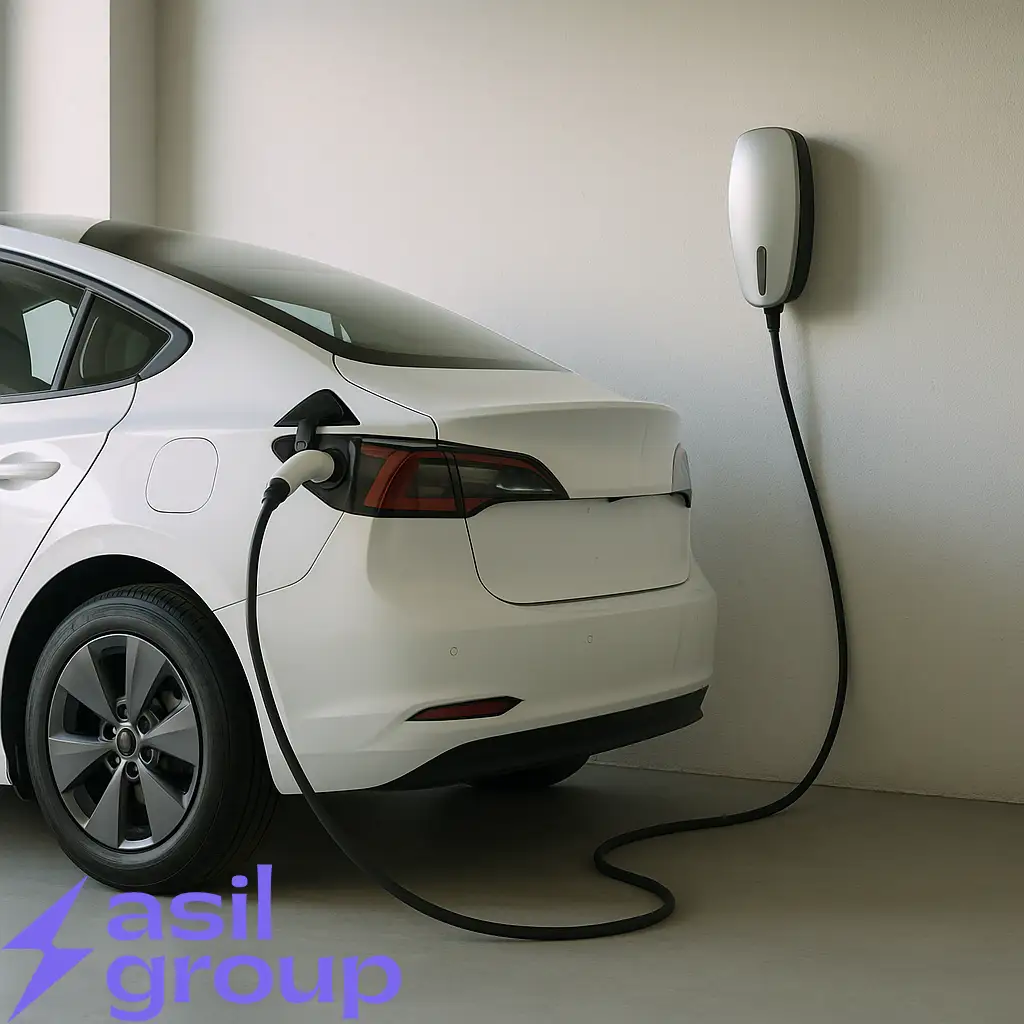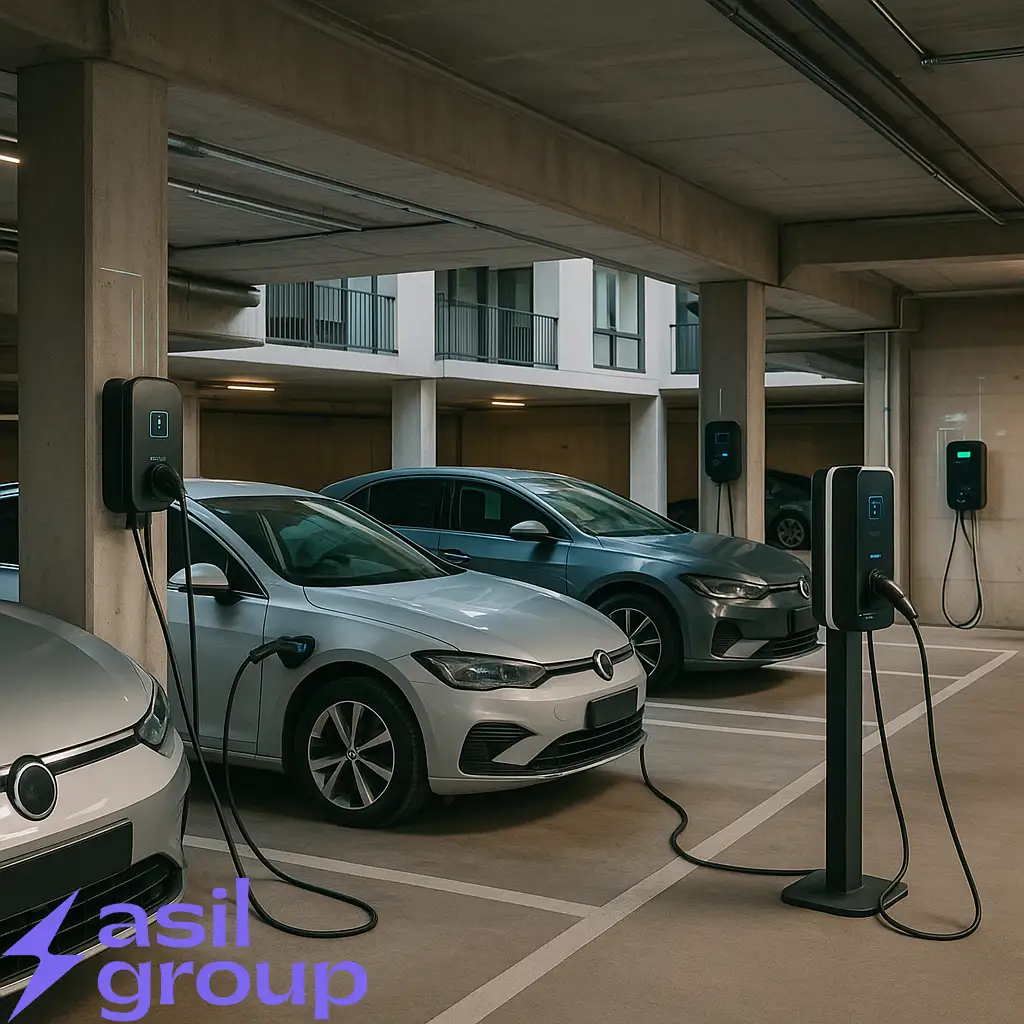
Smart Load Management in EV Charging Networks
Back to all posts As electric vehicle (EV) adoption accelerates globally,

As electric vehicles (EVs) continue to gain popularity, the demand for efficient and convenient charging solutions is on the rise. One of the most effective options for home and workplace charging is the Wallbox charger. This article, brought to you by Asil Group, explores Wallbox chargers for EVs, highlighting their benefits, types, installation considerations, and how they can enhance the EV charging experience.
Wallbox chargers are advanced charging stations designed to provide faster and more efficient charging for EVs compared to standard AC chargers. They are typically mounted on walls in garages, parking lots, or workplaces, offering a practical solution for regular EV charging needs.
Wallbox chargers are a crucial component of the EV charging infrastructure, providing a reliable, fast, and efficient solution for home and workplace charging. Understanding their benefits, types, and installation considerations can help EV owners make informed decisions and enhance their charging experience.
With the right Wallbox charger from Asil Group, EV owners can enjoy the convenience and efficiency of reliable charging, supporting a seamless transition to electric mobility. As EV adoption continues to grow, Wallbox chargers will play a vital role in the development of sustainable transportation solutions.
When comparing Wallbox chargers with other charging options, such as AC and DC chargers, it’s important to understand the differences in their features, costs, and ideal use cases. Below is a comprehensive comparison to help you make an informed decision:
| Feature | AC Chargers | DC Chargers | Wallbox Chargers |
|---|---|---|---|
| Power Output | 3.7 kW to 22 kW | 35 kW to 350 kW or more | 7.4 kW to 22 kW |
| Charging Speed | Slower, ideal for overnight charging | Much faster, suitable for quick top-ups | Faster than standard AC, slower than DC |
| Installation Cost | Lower | Higher | Moderate |
| Maintenance Cost | Lower | Higher | Moderate |
| Connector Types | Type 1 (SAE J1772) or Type 2 (Mennekes) | CCS, CHAdeMO, or Tesla Supercharger | Type 1 (SAE J1772) or Type 2 (Mennekes) |
| Ideal Use Case | Home, workplaces, public places | Highway rest stops, urban fast-charging hubs, commercial fleets | Home, workplaces, commercial parking areas |
| Complexity of Infrastructure | Simpler | More complex | Moderate |
| Smart Features | Basic | Basic | Advanced (Wi-Fi, app integration, scheduling) |
| Safety Features | Basic | Advanced | Advanced (overload protection, temperature monitoring) |
| Overall Cost | Low | High | Moderate |

Back to all posts As electric vehicle (EV) adoption accelerates globally,

Back to all posts As electric vehicles (EVs) become more popular,

Back to all posts As electric vehicles (EVs) become more common,

Back to all posts As electric vehicle (EV) adoption accelerates globally,

Back to all posts As electric vehicles (EVs) become more popular,
Asil Group offers cost-effective and eco-friendly EV transportation solutions. We focus on convenience with AC chargers, DC fast chargers, and Wallbox chargers, serving premium locations and enhancing quality of life with smart, sustainable EV charging.
Asil Group offers cost-effective and eco-friendly EV transportation solutions. We focus on convenience with AC chargers, DC fast chargers, and Wallbox chargers, serving premium locations and enhancing quality of life with smart, sustainable EV charging.
Asil Group offers cost-effective and eco-friendly EV transportation solutions. We focus on convenience with AC chargers, DC fast chargers, and Wallbox chargers, serving premium locations and enhancing quality of life with smart, sustainable EV charging.
Phone: +98 21 22221422
Email: [email protected]